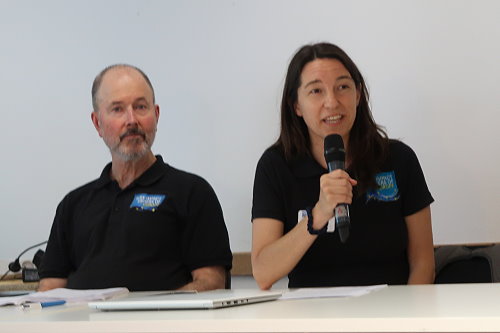 The emergency closure of the Baltic cod fishery in 2019 was the sad low point of mismanagement of Baltic fisheries. The Low Impact Fishers Europe (LIFE) apex organisation of small-scale, coastal fishers had invited managers, NGOs and other interested parties to a consultation to explore how to stop the desastrous downward spiral. Since 2019 things have not improved. On the contrary. The collapse of cod in the Western Baltic has also been followed by that of herring and sprat as major food of cod. The flatfishes are still there but can not replace either the ecological function or the economic role of the collapsed species in the ecosystem. Marta Cavallé, Executive Director of LIFE, flanked by Brian O'Riordan, her predecessor, opened the meeting and welcomed all participants.
The emergency closure of the Baltic cod fishery in 2019 was the sad low point of mismanagement of Baltic fisheries. The Low Impact Fishers Europe (LIFE) apex organisation of small-scale, coastal fishers had invited managers, NGOs and other interested parties to a consultation to explore how to stop the desastrous downward spiral. Since 2019 things have not improved. On the contrary. The collapse of cod in the Western Baltic has also been followed by that of herring and sprat as major food of cod. The flatfishes are still there but can not replace either the ecological function or the economic role of the collapsed species in the ecosystem. Marta Cavallé, Executive Director of LIFE, flanked by Brian O'Riordan, her predecessor, opened the meeting and welcomed all participants.
Christian Tsangarides, LIFE BANS coordinator, provided a well documented panorama about the decline of demersal (bottom) and pelagic resources in different parts of the Baltic. He reminded the audience that a semi-enclosed sea with gradually lower salinity north- and eastwards of its connection to the North Sea was per se a diffult habitat preventing most fish species from reaching the bigger sizes in the North Sea and North Atlantic.
He also questioned the wisdom of allowing industrial fisheries to be let loose on herring and sprat for reduction to fish meal for Norvegian salmon fattening, while the same fish if it were allowed to grow and be caught with less impact gear in lower quantities for direct human consumption, would provide jobs and income for thousands of families.
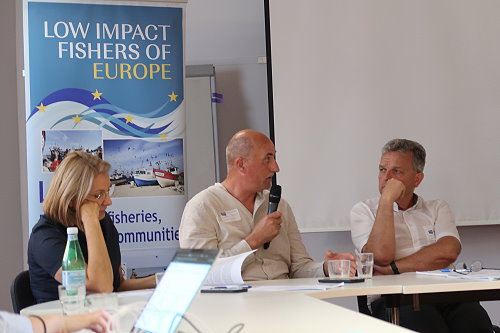 The 2016 Management Plan and the disregard for faithful application of the legislation in place since the reform of the Common Fisheries Policy (CFP) 10 years ago certainly had a role in bringing about the current emergency. It was at this point uncertain to bring the resources back to a productive condition, at least in a short time. He illustrated in particular that the policy set the target for fish biomass in the water above the level needed to produce maximum sustainable yield (MSY), not the least to account for species interactions. This recognised the impossibility to exploit all species - predators and prey - at the same level. Instead, in practice, annual quota targets for the fisheries were set at MSY levels, thus eroding the biomass in the water. And as could be seen in practice, even if there was a good spawning year class, it would be caught largely before even reaching reproductive size, thus deepening the emergency.
The 2016 Management Plan and the disregard for faithful application of the legislation in place since the reform of the Common Fisheries Policy (CFP) 10 years ago certainly had a role in bringing about the current emergency. It was at this point uncertain to bring the resources back to a productive condition, at least in a short time. He illustrated in particular that the policy set the target for fish biomass in the water above the level needed to produce maximum sustainable yield (MSY), not the least to account for species interactions. This recognised the impossibility to exploit all species - predators and prey - at the same level. Instead, in practice, annual quota targets for the fisheries were set at MSY levels, thus eroding the biomass in the water. And as could be seen in practice, even if there was a good spawning year class, it would be caught largely before even reaching reproductive size, thus deepening the emergency.
Testimonials of fishers illustrated that decline further by showing how they and their fellow coastal fishers had lost one source of income after another because of the serial collapses. These were mostly provoked by allocating almost all quota to industrial fishers who were able to catch in a few days, what coastal fishers would catch in weeks, even months, then move on as their bigger vessels had a much larger radius of action. The numbers of coastal fishers were shrinking continuously.
Bengt Larsson, the leader of Swedish small-scale fishers (Sveriges Yrkesfiskares Ekonomiska Förening, SYEF) looked back at 40 years of work in the coastal fishery. He explained how he was trying to survive despite the odds. Now there was no more cod or herring fetching higher prices than when caught in industrial trawls. In order not to give up, he had retooled and withdrawn into the Swedish archipelago, where the trawlers could not reach. Like him a few coastal fishers could still carve out a living, especially if they managed to cut out any middle men and market their high quality catch directly.
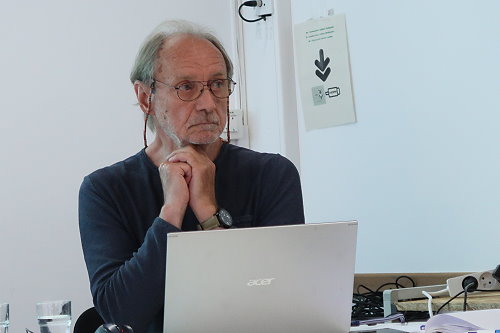 David Lange of the organisation FSK echoed this experience in Denmark, where fewer coastal fishers were still trying to resist, but could only do so if they managed alone without co-workers to cut costs. The introduction of individual transferable quotas (ITQs) had led to massive and very rapid concentration of capital ownership in the Danish fleets and left barely any space for fishers operating with low impact gear within a small geographical range.
David Lange of the organisation FSK echoed this experience in Denmark, where fewer coastal fishers were still trying to resist, but could only do so if they managed alone without co-workers to cut costs. The introduction of individual transferable quotas (ITQs) had led to massive and very rapid concentration of capital ownership in the Danish fleets and left barely any space for fishers operating with low impact gear within a small geographical range.
Depressed as the overall ecosystem was the coastal fishers also felt the competition of cormorants and seals catching the same target species now available in minimal quantities. And they strongly insisted that something had to be done to the extremely high wasted bycatch of industrial fishers in the region that had actually increased over time. They also mentioned that remobilising CO2 from the sediment by bottom trawling was a slap in the face of biodiversity and climate protection.
Rainer Froese of GEOMAR in Kiel, Germany, then walked the audience through how quota are being set, what the data time series showed and what could and should be changed to rebuild the resources in a functioning ecosystem that was able to produce in accordance with the mandate of the CFP.
He underlined that he based his entire presentation on data painstakenly extracted from the databases of the International Council for the Exploration of the Sea (ICES), headquartered in Denmark. Governments send their scientists for stints at ICES.
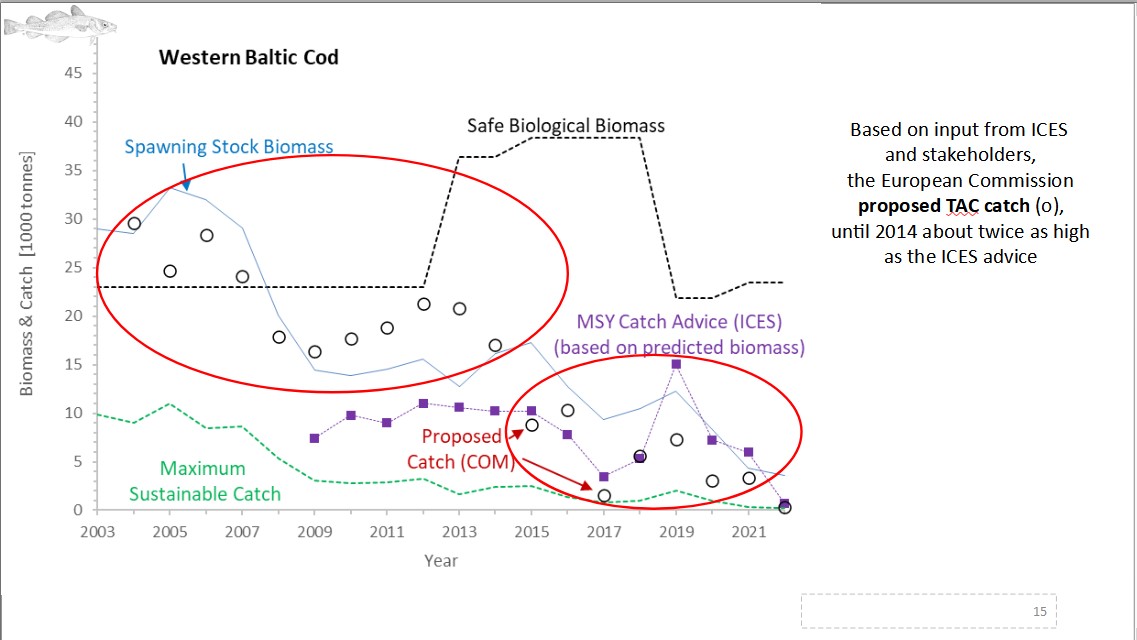
Since the 2013 reform of the CFP, the European Commission uses ICES as the major source of scientific advice to establish annual predictions of expected biomass of major commercial species the following year. Often more than 30% of this expected biomass are then recommended as proposed catch as maximum sustainable catch (MSY). On this basis, the Commission proposes a Total Allowable Catch (TAC) which is debated at the annual meeting of EU ministers in charge of fisheries. The ministers then decide the legal basis for catches the following year, inevitably with much concern for political, economic and social matters.
It so happened that biomasses were rapidly declining as exemplified in the detailed data graph above for cod in the Western Baltic and in summary below for all major commercial species (slides from Rainer Froese's presentation). For some reason the ICES advisers proposed far too high extractions. Based on their MSY models, in 2019 the recommended catch even exceeding the biomass effectively in the water.
Since 2015, when the reformed CFP gradually became operational, Commission proposals for TACs tended to be more conservative than ICES advice, and ministers mostly did not stray much from Commission proposals for cod - and its food species herring and sprat. It turned out that the fleets could not often not even catch the alloted quota, because the biomass left in the water was simply to low to produce the predicted harvest.
What would be sustainable - once sufficient biomass is again in the water to produce above MSY - is to target a fishing mortality, which is 20% less for predators than required for MSY. For prey species, half the single species MSY fishing mortality should not be exceeded. This way, the harvesting strategy would account for species interactions, environmental variability and the uncertainty in the data. Such a management approach would lead to higher profitability of the fishery and stable food production.

In the light of this explanation, it is high time to stop fishing for some time in the hope to let the populations recover. When pressures were a bit released for some species, this is what happened in the past. At the extremely low levels of both cod biomass also starved for lack of food, however, it is not any more certain that this can be achieved as quickly as predicted in 2015 at higher biomasses of all species, including herring and sprat.
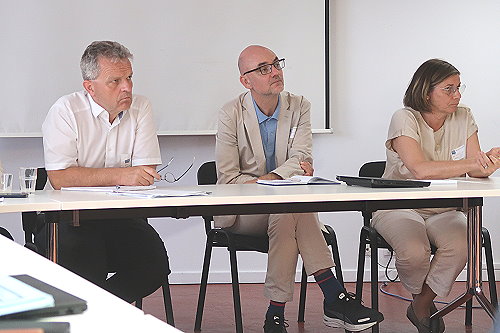 As an ecological generalist, cod could also temporarily feed on crabs, mussels and other bottom dwelling organisms, if there was enough oxygen in near bottom water. That is not the case everywhere despite some apparent reductions in deadly fertiliser run-off from industrial agriculture. And the warming of the shallow waters of the Baltic further reduces oxygen levels further in the water. Having allowed the degradation to this low point, it is not at all a forgone conclusion that recovery will happen quickly. But not trying would be wreckless.
As an ecological generalist, cod could also temporarily feed on crabs, mussels and other bottom dwelling organisms, if there was enough oxygen in near bottom water. That is not the case everywhere despite some apparent reductions in deadly fertiliser run-off from industrial agriculture. And the warming of the shallow waters of the Baltic further reduces oxygen levels further in the water. Having allowed the degradation to this low point, it is not at all a forgone conclusion that recovery will happen quickly. But not trying would be wreckless.
The ensuing panel discussion allowed to share more insights on how the decision making process had evolved. Maja Kirchner confirmed the horse trading that happened regularly before the last reform of the CFP, but that since 2015 the gear shifted very much towards being in tune with scientific advice. She also pointed out that Member States had the possibility of setting up regionally adjusted management regimes and explicitly refer to targets above MSY rather than MSY, in line with the CFP. This and other measures were something certainly worth considering to address the emergency in Baltic.
Listening also to 'common sense' and empirical observations of the coastal fishers, who are daily on the water, was also among the obvious recommendations for other next steps. That could help building in more reality checks. Bernd Söndgerath cited recent experience in Germany where some coastal fishers are employed for data collection, also as a compensation for lacking catches and in order not ot lose their skills and cultural heritage.
It was encouraging to see that the ICES and institutional representatives showed openness to what they had heard during the presentations and discussions. The majority certainly seemed to think that the sorry state of affairs was more the result of the failure to implement the provisions of the reformed CFP rather than the inherent weaknesses of the policy. Then, walk the talk! And make space for coastal fishers after recovery, at the expense of an industry that has outlived its shelf life.
See the programme here 'No fishers of the future without fishes in the future!'. The press release after the meeting can be found here and access the analysis by the LIFE Platform about the sorry state of the resources complete with proposals on what to do to rebuild the ecosystem.








